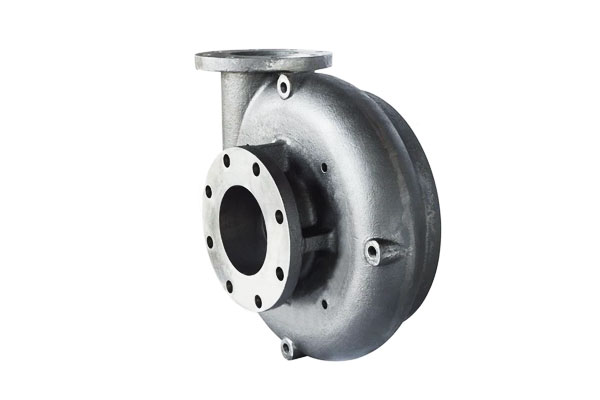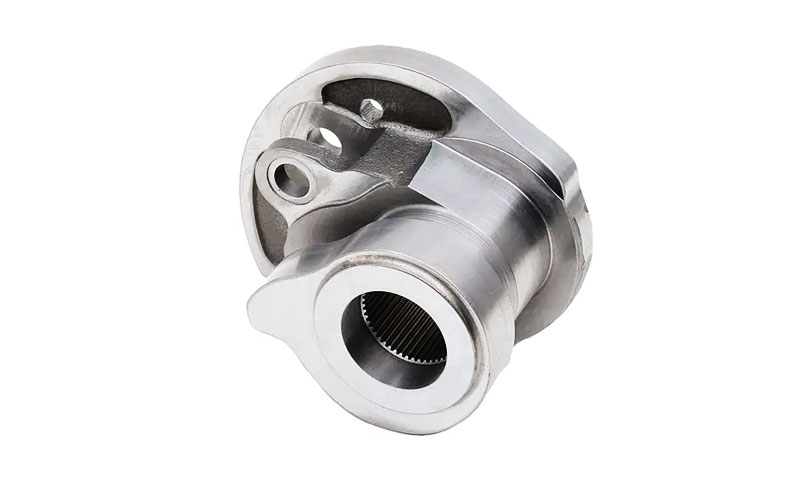1. Уводзіны
Страчаны воск (інвестыцыя) casting is selected where Складаная геаметрыя, тонкая аздабленне паверхні, Шчыльны мерны кантроль, and the ability to cast high-performance alloys are principal requirements.
It spans applications from jewelry and art to aerospace turbine blades, медыцынскія імпланты, precision valves and pump components, and specialty automotive or energy parts.
Variants of shell chemistry (кремнезем-золь, вадкае шкло, hybrid), pattern materials (low/medium/high-temperature wax and castable resins), and melt atmosphere (vacuum/inert) allow the process to be tuned to requirements for surface fidelity, alloy reactivity, and mechanical integrity.
Investment casting is economical for low-to-medium and some high-value medium-volume runs where alternatives (сувы, machining from billet, памерці кастынг) cannot meet combined geometry and material needs.
2. Why Choose Lost-Wax Casting?
Key strengths that make lost wax casting attractive:
- Complex near-net shape — internal passages, thin ribs, undercuts and integrated features that reduce assembly and machining.
- Excellent surface finish and detail — typical as-cast surface roughness: silica-sol shells ≈ 0.6–3 µm Ra; water-glass shells ≈ 2.5–8 µm Ra.
- Дакладнасць памераў — typical tolerances ±0.1–0.3% of nominal for many engineering parts; critical datums are usually machined.
- Material flexibility — steels, нержавеючая, дуплекс, сплаў сталі, суперсплавы на аснове нікелю, кобальтавыя сплавы, тытан, copper alloys and selected aluminum alloys.
- Thin wall capability — minimum practical wall thickness ranges from ~0.3–0.5 mm (ювелірныя вырабы) да 1.0–1,5 мм for engineering castings; thicker sections are also feasible.
- Ability to cast difficult alloys — with silica-sol shells, vacuum/inert melting and controlled shell chemistry, reactive alloys (тытан, Ni суперсплавы) з'яўляюцца магчымымі.
- Repeatability and small batch economics — tooling cost is moderate (васковыя плашкі) and can be offset by short runs and rapid NPI when using printed patterns.
3. Industry-by-industry — Applications of Lost-Wax Casting
Восковае ліццё is used wherever complex geometry, тонкая аздабленне паверхні, alloy flexibility and tight tolerances deliver clear performance or cost advantages.

Аэракасмічная & Gas Turbine
Typical parts:
turbine blades and vanes (невялікія & mid-size), nozzle guide vanes, combustor components, fuel-system housings, small structural brackets.
Why investment casting:
ability to form aerofoil shapes with thin walls and internal cooling passages, compatibility with nickel superalloys and directional-solidification/single-crystal variants, and very tight metallurgical control (нізкія ўключэння, controlled grain structure).
Распаўсюджаныя сплавы & shell choices:
Ni-based superalloys (Умова, René types) - silica-sol shells with high-temperature firing; single-crystal processes use specialized ceramic cores and shell architectures.
Vacuum melting/pouring and argon handling are standard.
Production scale & tolerances:
volumes range from hundreds to many thousands per part; critical datums machined post-cast; dimensional tolerances often ±0,05–0,15% for aerodynamic faces. Surface finish targets: ≈0.6–2 µm Ra (кремнезем-золь).
QA / process notes:
CT/X-ray, full metallography, mechanical coupon testing, creep/rupture testing, and often HIP for high-fatigue or fracture-critical parts.
Design must account for shrinkage, gating location, and post-casting heat treatment distortion.
Пакаленне электраэнергіі & Turbomachinery (Прамысловы)
Typical parts:
steam turbine blades, small vanes, nozzle parts, high-stress pump impellers, valves for high-temperature service.
Why Lost-wax casting:
need for high-temperature alloys and shaped flow paths; investment casting enables near-net aerodynamics and reduced assembly.
Сплавы & ракавіны:
Ni and Co superalloys, some stainless/cobalt alloys — кремнезем-золь preferred for thermal stability; hybrid shells used when cost is a concern but detail is still required.
Вытворчасць & QA:
medium to high volumes per OEM program, heavy reliance on NDT (рэнтгенаграфія), material traceability and post-cast heat treatments (solution/age). Flow/CFD-driven geometry optimization common.
Змазваць & Бензін / Нафтахімічны / Subsea
Typical parts:
valve bodies and trim, корпуса пад ціскам, subsea connectors, specialty fittings, сядла клапанаў, Кампаненты помпы.
Чаму:
Каразія супраціву, complex internal flow passages, Працуе з невялікім да сярэдняга вытворчасці, and the need for special alloys for sour service.
Сплавы & ракавіны:
duplex/super-duplex stainless steels, Ni-base alloys, Cu-Ni and nickel aluminides; вадкае шкло often used for larger valve housings, кремнезем-золь or hybrid shells for wetted, detailed surfaces. Vacuum casting used for critical Nickel parts.
Quality concerns:
sour service/NACE requirements, hydrostatic testing, PMI, radiography/ultrasonic inspection, and often post-cast heat treatment and mechanical testing.
For subsea, strict traceability and qualification testing (pressure cycling, corrosion tests) apply.
Design tips:
ensure adequate gating for hot spots, specify sealing face machining allowances, and determine porosity acceptance criteria up front (часта <0.5 vol% for pressure components).
Медычны & Стаматалагічны (Імплантаты & Instruments)
Typical parts:
orthopedic stems, cups, dental crowns/bridges (historically), surgical instrument components, patient-specific implants.
Чаму:
біясумяшчальныя сплавы (Ti-6Al-4V, Co-Cr) require precise geometry, тонкая аздабленне паверхні, and sometimes porous or textured surfaces for osseointegration — features that investment casting can produce without extensive machining.
Сплавы & ракавіны:
кремнезем-золь shells with zircon/alumina first coats for titanium and reactive alloys; vacuum or inert melting/pouring mandatory for titanium.
Нарматыўная & QA:
ISO / FDA / medical device standards apply — full traceability, sterility processing, extensive mechanical and corrosion testing, and surface finish controls.
HIP is frequently used to eliminate internal defects for implants.
Production scale:
from single custom bespoke parts (patient-specific) to thousands for standard implants; tolerances and surface finish are tightly specified (machined sealing faces where necessary).
Марская & Суднабудаванне
Typical parts:
працоўныя, strainer housings, propeller cones, часткі помпы, seawater fittings and valve bodies.
Чаму:
copper-base alloys (бронза, НАБ, Cu-Ni) and stainless castings resist seawater corrosion; investment casting produces smooth wetted surfaces and integral geometries that reduce cavitation and drag.
Сплавы & ракавіны:
бронза, Cu-Ni, stainless and ductile irons; вадкае шкло shells are common for larger parts, with fine first coats (цыркону) for wetted areas when needed.
Якасць & тэставанне:
balance testing for rotating parts, hydrostatic and pressure testing for housings, and corrosion testing for long-term service.
Surface finish and dimensional balance (runout tolerances) are critical for impellers.
Помпы, Клапаны & Fluid-Handling Equipment
Typical parts:
volutes, працоўныя, valve bodies and trim, bespoke pump stages.

Чаму:
складаныя ўнутраныя каналы, tight sealing surfaces, and corrosion/erosion-resistant alloys for aggressive fluids. Investment casting reduces part count by combining features.
Сплавы & ракавіны:
з нержавеючай сталі (316/317), дуплекс, бронза, па сплавах; вадкае шкло or hybrid shells depending on required face finish.
Вытворчасць & QA:
routine radiography or dye-penetrant, dimensional checks for sealing faces, праверка на цвёрдасць, and flow testing where applicable. Design for machining datums and gating is essential.
Аўтамабільны (Specialty & Прадукцыйнасць дэталяў)
Typical parts:
корпусы з турбакампрэсара, small gearbox housings, exhaust components, specialty brackets and low-volume light-weight parts.
Чаму:
allows complex integrated shapes in metals not suitable for die-casting or where casting plus machining beats machining from solid for complex geometries.
Also used for small series and prototyping via printed patterns.
Сплавы & ракавіны:
aluminum alloys for housings (water-glass or silica-sol depending on detail), stainless or Ni alloys for exhaust and performance parts.
Вытворчасць & economics:
lower volumes than mass automotive processes; investment casting is used where shape/function justify per-part cost. Use of castable resins speeds NPI.
Электроніка, Электрычны & RF Components
Typical parts:
RF waveguide components, shielding housings, раздымы, thermal management parts.
Чаму:
near-net conductive housings with integrated fins, high-precision geometries for RF performance or cooling. Aluminum and copper alloys commonly used.
Сплавы & ракавіны:
медзь, алюміній; вадкае шкло shells for larger pieces, silica-sol for fine features.
Design notes:
control dimensional tolerance for RF fits, plan machining allowances for connectors and surfaces that mate to other parts.
Ювелірныя вырабы, Дэкаратыўная & Small Art Castings
Typical parts:
кольцы, pendants, скульптуры, small decorative elements.
Чаму:
lost-wax originated here — unmatched ability to reproduce fine texture and complex forms; low tooling cost for bespoke work.
Materials & ракавіны:
золата, срэбра, бронза; low-temperature waxes and кремнезем-золь or specialized fine washes to capture detail.
Якасць & скончыць:
surface finish immediately after shakeout is often excellent (mirror polishing possible); finishing labor (polish, пакрыццё) remains part of cost. Minimum walls can be <0.5 mm for jewelry.
Research, Прататыпаванне & Additively Enabled Designs
Typical parts:
прататыпы, complex cores/printed internal channels, one-off bespoke hardware.
Чаму:
3D-printed castable resins and printed ceramic cores remove tooling costs and allow rapid iteration; investment casting translates printed complexity into metal.
Сплавы & ракавіны:
any compatible alloy depending on application; hybrid shells commonly used to control cost and detail.
Turnaround & шкала:
ideal for low volume — single to hundreds — and for geometries impossible by traditional tooling.
Cross-industry practical guidance
- Shell selection: выкарыстоўваць кремнезем-золь for highest surface fidelity, vacuum compatibility and reactive/high-temp alloys (аэракасмічная, медычны, Суперліі);
выкарыстоўваць вадкае шкло for economic, robust shells in steel/iron/marine applications;
adopt hybrid ракавіны (silica-sol/zircon face + water-glass backup) when you need a good face finish but want lower shell cost and stronger handling. - Porosity control: specify porosity acceptance criteria early.
For fatigue or pressure-containing parts require vacuum pours, squeeze, or HIP and specify CT/X-ray acceptance levels; target <0.5 vol% for critical components where possible. - Critical datums & апрацоўванне: always define precision datums and machined surfaces in the RFQ so gating and risering avoid critical areas.
Expect typical as-cast tolerances of ±0.1–0.3% and machining for sealing faces or bearings. - Surface finish expectations: кремнезем-золь ~0.6–3 µm Ra; вадкае шкло ~2.5–8 µm Ra — post-processing (апрацоўванне, шмарка, драба) used where required.
- Part size & mass: investment casting commonly covers from grams (ювелірныя вырабы) up to tens of kilograms (industrial impellers/valves); very large parts are possible but may favor water-glass shells and staged builds.
- Collaboration: early engagement with the foundry (для варотаў, design for castability, material choice and QA plan) reduces iterations and accelerates qualification.
4. Emerging trends that expand or change the application space

- Additive manufacturing for patterns and cores: SLA/DLP printed castable resins and binder-jet ceramic cores eliminate tooling for many runs and enable geometries previously impossible (integral conformal cooling, intricate internal passages).
This expands investment casting into rapid-turn prototyping and low-volume complex parts. - Hybrid shell systems & advanced refractories: tailored inner coats (цыркону, гліназём) improve compatibility with reactive alloys while outer coats reduce cost.
- Integration with simulation & digital QA: solidification simulation (MAGMA, ProCAST), CT-based porosity mapping and machine learning for process control reduce trial cycles and increase first-pass yield.
- Improved melt and degassing tech: vacuum induction melting, argon degassing and filtration reduce inclusions and porosity—opening new applications in critical components.
- Sustainable practices: higher wax recovery rates, slurry recycling, energy recovery in burnout, and higher use of recycled metals in suitable alloys.
5. Conclusion
Lost-wax casting remains a unique and widely used manufacturing route because it combines geometric freedom, high surface quality and alloy versatility.
Its applications concentrate where those attributes add the most value: aerospace and energy turbine components, медыцынскія імпланты, precision valves and pumps, marine and subsea hardware, jewelry and art, and specialty automotive components.
Newer technologies—especially additive pattern production and advanced shell systems—are widening the range of feasible applications, shortening development cycles and improving sustainability.
For any critical application the winning outcome hinges on early foundry collaboration, strict process control, and a matching of alloy, shell and QA to the part’s service demands.
FAQ
Can investment casting make very large parts?
Yes — with appropriate shell architecture and handling, large investment castings (>20–30 kg) з'яўляюцца магчымымі, though water-glass shells and staged builds are commonly used.
Для вельмі вялікіх, simple parts sand casting or permanent mold casting may be more economical.
What volume range is best suited to lost-wax?
Investment casting is economical from one-off prototypes up to medium volumes (hundreds → tens of thousands).
For very high volumes of simple shapes, памерці кастынг, stamping or forging usually wins.
When do I need HIP?
Specify HIP for fatigue-critical, pressure-containing or aerospace parts where internal shrinkage porosity must be minimized. HIP greatly improves fatigue life and fracture toughness by closing internal voids.
Which shell system should I choose for titanium?
Ужываць кремнезем-золь (коллоідавы крэмнія) inner coats and vacuum/inert melting/pouring; water-glass shells are generally unsuitable for titanium without extensive barrier measures.
How fine can investment cast features be?
With silica-sol shells and fine wax/resin patterns you can achieve features <0.5 мм, but for engineering robustness a conservative minimum of ~1,0 мм is typical unless evidence from prototypes supports smaller features.



